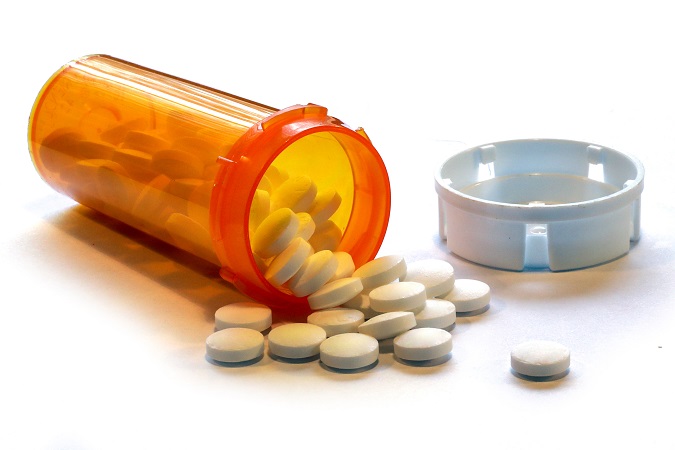What Is Methadone?
Methadone (also sold under the name “Dolophine”) is a powerful opioid drug that is used to treat extreme pain. More commonly, this highly regulated prescription medication is administered to those who have an addiction to heroin or narcotic painkillers like Hydrocodone, Oxycodone, Fentanyl, or Morphine. Methadone is an addictive and potent medication that works on opioid receptors sites in the brain. When used to treat addiction, it is administered daily at a licensed clinic or detox center to addicted people who are trying to wean themselves off heroin or other opioids. There are currently an estimated 500,000 Americans using this medication as a way to fight drug dependence.
Methadone Used To Be The Only FDA Approved Opioid Replacement Therapy
Once upon a time in America, Methadone was the only medicinal solution available to women seeking a solution to specific drug dependencies. It was considered the “go-to” treatment option for those struggling with an addiction to heroin or narcotic painkillers because it was the only FDA-approved medication of its kind. In the wake of the current opioid epidemic, it still serves as a popular choice among substance abuse providers treating addiction. However, with new Opioid Replacement Therapies available (like Suboxone and Naltrexone), many doctors and addiction treatment experts are seeking alternative ways to help women find freedom from addiction without recommending Methadone. Still, these drugs require long-term maintenance and result in ongoing dependence. At Denver Women’s Recovery, we believe professional addiction treatment and abstinence are still the best way to treat drug dependence. We don’t endorse the use of Methadone as it is not the ideal medication for many women seeking recovery. Nevertheless, we want to provide some helpful information about the drug because the use of this Opioid Replacement Therapy continues to increase in Colorado.
A Brief History on Methadone and How It Became Popularized
Today, Methadone is widely accepted as an effective treatment for addiction. Here’s how we got here:
- Methadone was invented during WWII by German scientists Dole and Nyswander who were looking to create a narcotic painkiller for German soldiers in the 1930’s. There was an extreme shortage of Morphine at the time, which was the primary narcotic given to wounded soldiers injured on the battlefield. The German military eventually abandoned the idea of using this medication for pain. In 1947, American pharmaceutical company Eli-Lilly began manufacturing the drug under the brand name “Dolophine.”
- In the 1960’s and 70’s, heroin addiction was on the rise in America. The hippie counter-culture movement was in full swing. As a result, drug abuse quickly became a major problem among young people experimenting with mood and mind-altering substances. Furthermore, many soldiers returning from Vietnam developed a heroin addiction while serving in combat. They came home hopelessly addicted and continued to use the drug in the United States.
- Doctors began to study the use of Methadone for the treatment of heroin addiction. In the 1960’s; Dr. Vincent Dole, a medical doctor of Rockefeller University, secured a grant to study treatment options for opioid dependence. Dole ultimately developed the modern protocol of a single daily dose to counteract addiction.
- In 1971, former President Richard Nixon named drug addiction “public enemy number one.” Strict punishments for drug offenders were put into place, marking the beginning of the so-called War on Drugs. However, Nixon recognized a growing need to offer treatment options for addicted veterans. He established the first federal Methadone program, which was available to anyone with an addiction to opioids. Since then, the drug has been used to treat addiction.
How Methadone Is Used In The Treatment of Addiction
Methadone is a Medication-Assisted Treatment (MAT) that should be taken in conjunction with substance abuse treatment and counseling. However, many people just take the drug without addressing the underlying causes of their addiction. Offered in a pill, liquid, or wafer form; the drug works by changing the way the brain and the nervous system respond to pain to reduce drug withdrawal. Withdrawal is typically what drives an addiction to heroin or prescription painkillers. Women who are hooked on these drugs get very sick if they don’t have an adequate amount in their system. Those who use heroin or other opioids are forced to take their drug of choice several times a day. Methadone is slow-acting and can last up to 16-30 hours, requiring only a once-daily dose. It reduces the potential for a lethal overdose, lessens cravings, and prevents excruciating withdrawal symptoms. There are strict federal regulations that control how this drug is administered. Only licensed clinics and doctors that have been approved to dispense the drug can provide it as a treatment method. Because it is such a highly guarded substance, women who take this medication must go to their specified provider to receive a daily dose for an extended period of time. After a proven track record of responsible use and abstinence from heroin or other opioids, it can be offered as a take-home prescription.
Why This MAT Has Been Viewed As A Safer Alternative To Heroin and Opioids
There are two main reasons why Methadone is considered a safe alternative to heroin and other opioids. When America established its first Methadone clinics, most heroin users were injecting the drug intravenously with needles. As a result, there was a rampant increase in the number of people contracting Hepatitis and other blood-borne diseases (which would later include HIV). Because this Medication-Assisted Therapy is administered safely, addicts no longer need to use needles; which has greatly reduced the spread of disease. Also, Methadone is regulated by the Food and Drug Administration, so it is considered much safer than street heroin. Plus, it is taken once a day as opposed to prescription narcotics which are usually taken around the clock. This significantly reduces the likelihood of overdose.
The Downside To Methadone Maintenance
Methadone is a highly addictive substance. Those who take it every day will become dependent on it and ultimately have to withdraw from it. The ultimate goal of this kind of Medication-Assisted Treatment is to replace the use of heroin or narcotic painkillers with a safe, supervised maintenance program that will allow addicts to slowly reduce their use of opioids. According to the Substance Abuse and Mental Health Services Administration (SAMHSA), the length of this treatment should be a minimum of 12 months. While organizations like SAMSHA insist that a Methadone maintenance program is not designed to serve as a substitute for heroin or prescription opioids, that is exactly what it is. Those addicted to heroin or narcotic painkillers stop taking their drug of choice and start taking this medication instead. Although abstinence is the ultimate goal of this form of addiction treatment, opioid dependence is ongoing for an extended period of time. This is not ideal. Furthermore, Methadone side effects can create uncomfortable body sensations, which does not promote optimal health among those who use the drug. These include:
- Euphoria similar to a heroin high
- Anxiety
- Depression
- Restlessness
- Insomnia
- Weakness
- Dizziness
- Tremors
- Constipation
- Nausea
- Vomiting
- Loss of appetite
Also, Methadone can produce an overdose and dangerous side effects that include:
- Chest pains
- Shallow breathing
- Difficultly breathing
- Fainting and loss of consciousness
- Mental confusion
While this drug is arguably much safer than heroin and other opioids, it is still dangerous and habit-forming.
Is Methadone Being Phased Out?
In recent years, other MATs like Suboxone and Naltrexone have become quite popular in treating women who struggle with addiction. These opioid-antagonists provide relief from withdrawal, cravings, and dependence by providing a steady stream of opioids into the body. Some argue that these drugs are much safer and more effective than Methadone. You might think this means Methadone is becoming a thing of the past. This is simply not true. This drug is still holding its own as a major player in fighting the opioid epidemic. According to an article in the Denver Post, the number of Methadone clinics in Colorado have doubled in the past three years. This speaks to the ever-increasing need for addiction treatment for women who have become addicted to heroin or prescription narcotics. Millions of Americans are hooked on opioids and they have a sincere desire to stop using them. However, they know that if they stop taking them on their own – without medication assistance – they will go into withdrawal, which almost guarantees a relapse. For this reason, many women pursue a Methadone maintenance program because they want to find relief from the cravings and withdrawal symptoms caused by opioid dependence. Their “recovery” from an addiction to heroin or narcotic painkiller is motivated by fear, which results in switching one drug for another. This does not promote abstinence, but instead, more dependence.
Why We Believe You Should Take a Different Route When Treating An Opioid Addiction
Many women pursue a Methadone maintenance program to kick heroin or prescription narcotics. However, at Denver Women’s Recovery, we believe that effective, ongoing, evidence-based opioid addiction treatment and complete abstinence is the way to go. We don’t believe in substituting one drug for another and we don’t see the real value in prolonging withdrawal for a year. Those who take Methadone will eventually have to withdraw from the drug, which can ultimately lead to a relapse on heroin or prescription narcotics. After being on Opioid Replacement Therapy for a year, and ultimately going back to the addiction that started the process in the first place, women can become even more hopelessly addicted. At Denver Women’s Recovery, we promote a short-term medical detox so that addicted women can safely and comfortably withdraw from heroin or prescription opioids and start their sobriety journey right away. Once detox is complete, we offer extensive addiction treatment services to teach women how to maintain and enjoy long-term recovery. If you want to receive addiction treatment and recover from opioid dependence, we can help. Contact us today for a free, confidential assessment over the phone.







